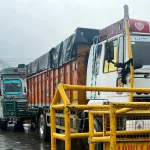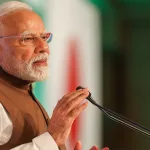Srinagar, Aug 05: All Gram Panchayats in Jammu and Kashmir have achieved 100% computer saturation under the Rashtriya Gram Swaraj Abhiyan (RGSA), but the Union Territory is yet to roll out online financial audits or digital payment mechanisms for Panchayat-level transactions.As per details available, 1,318 computers have been provided to J&K since 2022, ensuring digital access in all 4,291 Gram Panchayats.Despite this infrastructure, J&K has not generated a single audit report on the AuditOnline platform, a Ministry of Panchayati Raj portal designed to bring transparency and accountability to financial reporting at the grassroots. No audit plans for the 2023–24 cycle have been uploaded by any Panchayat in the UT.Similarly, Jammu and Kashmir has not integrated online payment systems under the eGramSwaraj-PFMS interface, which enables real-time, transparent fund disbursal to vendors and service providers. The UT remains outside the list of regions currently using this digital transaction model.As per financial records, the Union Ministry released a total of Rs 170 crore to J&K between 2022–23 and 2024–25 under RGSA which includes Rs 40 crore in 2022–23 (utilised Rs 57.75 crore), Rs 65 crore in 2023–24 (utilised Rs 98.61 crore), and Rs 65 crore in 2024–25 (utilised Rs 57.89 crore). While J&K figures among a handful of regions with full computer coverage at the Panchayat level alongside Kerala, Maharashtra and Goa, its progress in activating key digital governance tools remains limited. Platforms like GeM (Government e-Marketplace) and Meri Panchayat for public planning display have also not been fully adopted.There are 4,291 Gram Panchayats in Jammu and Kashmir. Of these, 3,964 have their own Panchayat Bhawans, while the rest operate out of shared or under-construction facilities. The 100% digital saturation is applicable only to functional Panchayat offices.The Ministry also said that efforts are ongoing to co-locate Common Services Centres (CSCs) within Panchayat Bhawans across the country, but did not specify J&K’s position in this integration.Connectivity remains a challenge in parts of the UT, particularly in hilly and snowbound areas. The Department of Telecommunications is currently working to upgrade BharatNet Phase I and II infrastructure in Jammu and Kashmir to ensure reliable broadband access for rural administrative offices.
J&K achieves 100% computer saturation in Panchayats
No online audit or payment integration yet

Sign Up For Daily Newsletter
Be keep up! Get the latest breaking news delivered straight to your inbox.
By signing up, you agree to our Terms of Use and acknowledge the data practices in our Privacy Policy. You may unsubscribe at any time.
Leave a Comment Leave a Comment
Stay Connected
Latest News
Recent Posts
- Jammu-Srinagar Highway Shut for fourth Day, Over 2,000 Vehicles Stranded
- 22 people killed, including four children in Russian strike on a residential building Kyiv: Ukrainian President Volodymyr Zelenskyy
- “Like automobiles, India, Japan can recreate same magic in batteries, semiconductors,” PM Modi says
- “Capital does not just grow, it multiplies in India,” says PM Modi at India-Japan Economic Forum
- J-K: Indian Army constructs Bailey bridge after collapse of Tawi bridge in Jammu







